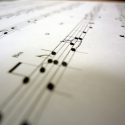*Keynote text delivered at the Music Encoding Conference, University of Maryland, May 24, 2018.
I am thrilled to be here with you today. I would like to begin by thanking the organizers, Raffaele Viglianti and Stephen Henry, for inviting me to give this keynote. I would also like thank the students and staff at the University of Maryland Libraries, MITH, and the Clarice Smith Performing Arts Center who were involved in making this conference run smoothly. Thank you.
When Raff and Stephen invited me to give this keynote they told me that the theme of the conference was “encoding and performance.” My original inclination was to talk about the ways in which I have engaged with digital tools and methods to facilitate faculty research and pedagogical initiatives, discuss the affordances that digital editions and encoded music can bring to a music seminar, as well as, ways in which students might interact with these materials. I will talk a bit about these things, but what was really on my mind and the focus of this keynote, is the issue of representation and canon. My hope is that this talk will encourage discussion and reflection.
Introduction
Between 2010–2015, I was working at the University of Connecticut (UConn) as the Music & Dramatic Arts Librarian and a digital humanities specialist. The music department offered degrees from the undergraduate through the doctoral level. One of my many responsibilities was to teach several sessions of a graduate music research and bibliography course, in which students would be introduced to key resources (both analog and digital) in music bibliography and research. One of the goals of this course was to expose students to the research process and activities, such as finding and accessing resources of primary and secondary materials, creating a bibliography, or writing a literature review.
Archival research was new to most of the graduate students enrolled in this course, therefore one of my goals was to not only discuss and show them the various thematic catalogues, indexes, or bibliographies that could lead them to manuscripts or early editions, but to also demonstrate the process of searching for digitized materials in the numerous digital open access collections that had come online in the 21st century, as well as how to locate interactive or analytical music resources.
Read the full post here.

